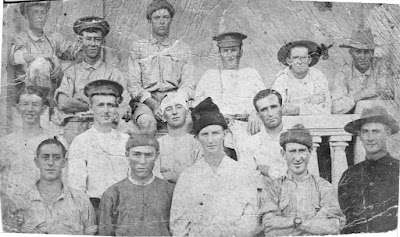When General Gough congratulated the men of the 2nd Australian Division, saying they had 'inflicted a severe defeat on the enemy and secured us most valuable ground,' he wasn't thinking of the 6,846 casualties which were the cost. The victory was severe on the 23 Infantry Battalion which had participated in the battle. Cyril Isles, a law clerk of Windsor was just one of the men who disappeared in the bombardment, never to be seen again. His name was recorded on the Kensington Methodist Church Roll of Honour, and also included in the Essendon Gazette Roll of Honour. There seems to be no obvious connection to the local area, but he was perhaps boarding locally and gave his parents' names on his attestation form.
Rod Martin tells Cyril Isles' story, which you can read here.


















